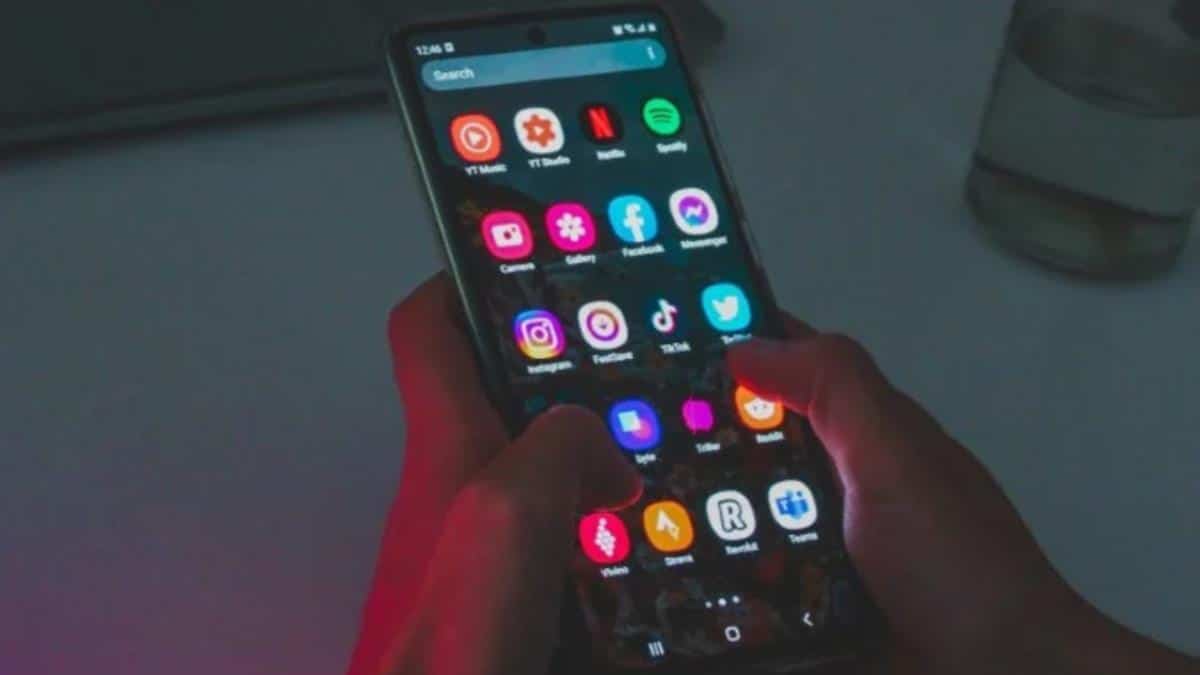Keeping your personal apps secure has become a top priority in today’s smartphone age. Whether it’s your messaging apps, gallery, or banking apps, privacy matters more than ever. Fortunately, Samsung offers built-in options that make it easy to lock apps without third-party tools. This helps you avoid unnecessary clutter while protecting sensitive data on your device.
Samsung’s app locking system is both fast and user-friendly. With features like Secure Folder and Biometric Lock, you can add an extra layer of security within minutes. Whether you’re a casual user or a privacy-conscious individual, these tools work smoothly with your daily usage.
Smart Security for Your Daily Use
In today’s smartphone-driven world, securing your personal information is more important than ever. With the increasing use of mobile apps for banking, messaging, and social interactions, ensuring that your apps are protected from prying eyes has become a necessity. Samsung phones offer a built-in way to lock apps without downloading third-party tools, offering convenience and safety at the same time.
Ways to Secure Apps on Samsung Devices
There are several native and alternative methods to lock apps on Samsung smartphones. Whether you’re looking for fingerprint protection, PIN code entry, or a private folder option, Samsung has solutions integrated within One UI.
Quick Methods to Lock Apps on Samsung Phones

| Method | Description | Setup Time | Security Level |
| Secure Folder | Built-in Samsung feature to hide and lock apps | Medium | High |
| App Lock via Settings | Available in One UI (some models) | Quick | Moderate |
| Third-Party Apps | From Play Store or Galaxy Store | Varies | Varies |
| Kids Mode / Samsung Kids | Locks content and apps for child-safe use | Easy | High |
Setting Up Samsung Secure Folder for App Lock
These apps can only be accessed through the lock credentials you’ve set. Even if someone gets hold of your phone, the data inside Secure Folder remains protected. Secure Folder is one of the most reliable and built-in methods to lock apps in Samsung. It creates a sandboxed area inside your device that is protected by Samsung Knox.
- Go to Settings > Biometrics and Security
- Tap on Secure Folder
- Log in with your Samsung account
- Set your preferred lock method: PIN, pattern, password, or biometrics
Using App Lock from Samsung Settings
Some newer Samsung phones offer a native “App Lock” feature in their settings. While this is not present in all models, One UI 5.0 and newer devices might include it.
- Open Settings
- Navigate to Advanced Features > App Lock or search for “App Lock” in the search bar
- Enable App Lock and choose your preferred locking method
- Select apps you want to secure
Samsung Features That Help With App Locking

Samsung smartphones offer built-in features like Secure Folder and App Lock to protect your private apps. With Samsung Knox Security, users can create a separate, encrypted space for sensitive information. The One UI interface also allows easy fingerprint or PIN protection for specific apps. These tools ensure enhanced privacy and simple app management.
| Feature Name | Available On Models | Extra Notes | Best For |
| Secure Folder | Galaxy S/Note/A/M series | Requires Samsung Account | Personal Privacy |
| Samsung Kids | Most new models | Focused on child safety | Parental Control |
| Knox Security | Enterprise-focused models | System-level protection | Business Users |
| One UI App Lock | Limited to select devices | May require software update | General Use |
Biometric Protection, Fingerprint and Face Recognition
With advanced fingerprint scanning and face recognition, users can safeguard critical apps and sensitive data effortlessly. These biometrics now extend beyond device unlocking to features like Secure Folder and selected apps. Enhanced algorithms ensure faster recognition with greater accuracy. This integration offers a seamless yet highly protected user experience.
Creating a Disguised App Lock Experience
Samsung offers smart options for users who want a more discreet way to protect their apps. Through Home screen settings, you can easily hide apps from view without needing third-party tools. This disguised app lock experience ensures sensitive apps stay out of sight while remaining fully functional. Hidden apps are only accessible through settings or search, adding another layer of security. It’s a simple yet powerful way to maintain privacy on your device.
- Tap Settings > Hide Apps
- Select the apps you want to hide
Tips to Keep Your Samsung Phone Even More Secure
Keeping your Samsung phone secure goes beyond just using a password. Enable two-factor authentication for Samsung accounts and important apps. Use Secure Folder to store private files and apps separately from the main system. Always review app permissions and limit access where possible. These simple habits can significantly strengthen the overall protection of your Samsung device.
- Avoid rooting your phone or installing unknown APKs
- Enable Google Play Protect
- Use Samsung Pass for secure sign-ins
- Avoid sharing your PIN, pattern, or passwords
Managing App Lock Notifications and Visibility
Even with apps locked, notifications might still show sensitive information on your Samsung device. To maintain privacy, customize notification settings for each locked app. This helps ensure your personal data stays hidden even when your screen is active.
- Go to Settings > Notifications
- Tap the app and toggle “Do not show notifications.”
Why Secure Folder Is Better Than Third-Party Options
The Secure Folder has the advantage of being natively protected by Samsung Knox, which is deeply integrated into Samsung’s hardware and software. This makes it less likely to be bypassed compared to app-based lockers, which can sometimes be uninstalled or force-closed. It also allows for app cloning. You can keep two versions of an app, one public and one inside Secure Folder—giving you the flexibility to separate work and personal accounts.
Maintaining App Lock During Software Updates
After major software updates, Samsung users may find that app lock settings are reset or disabled. It’s important to manually review and reapply app locks after every update. This quick step helps maintain strong protection for your private apps and data.
- Back up Secure Folder settings
- After updating, immediately revisit settings and re-enable app lock
Troubleshooting Common App Lock Problems
If your Samsung app lock isn’t working properly, it may be due to outdated software or conflicting settings. Keeping your phone updated ensures smoother and more reliable app lock performance.
- Clear app cache for Secure Folder or App Lock tool
- Reboot the device
- Re-register your biometric credentials
- Make sure you’re using the latest version of One UI
What to Avoid While Locking Apps
When locking apps on your Samsung phone, avoid using simple patterns or easily guessed PINs. Do not share your device’s security credentials with others. Skipping regular updates can also weaken app lock reliability. Always choose strong authentication methods for better protection.
- Do not rely solely on Face Unlock; combine it with a fingerprint or PIN.
- Avoid using easy-to-guess patterns or passwords.
- Don’t give app lock apps admin rights unless necessary.
- Don’t store your lock credentials in note-taking apps or unsecured files.
Wrapping Up Your Samsung App Lock Setup
Securing your apps is one of the smartest digital habits you can build today. Samsung phones offer both native and flexible ways to lock sensitive apps quickly and efficiently. Whether through Secure Folder, app hiding, or biometrics, each tool enhances your digital privacy. Your setup doesn’t need to be complex to be effective. Start with the features your phone already offers and combine them for layered protection. As Samsung continues to evolve its One UI platform, expect more privacy options in future updates.
Wrapping Up
Samsung makes this process seamless, giving you control over what’s private on your phone. Whether you’re using Secure Folder or app-specific fingerprint locks, the options are simple and effective. So the next time you hand your phone to someone or leave it unattended, you can breathe easier knowing your apps are protected. App locking on Samsung phones isn’t just smart; it’s essential for a secure mobile experience.
FAQs
What is the most secure way to lock apps on Samsung phones?
The most secure method is using Samsung’s built-in Secure Folder. It’s protected by Samsung Knox, offers biometric and PIN authentication, and stores apps in an isolated environment. Unlike third-party apps, it’s deeply integrated into Samsung’s system and cannot be uninstalled or bypassed easily. It also supports app cloning and hidden files for privacy.
Can I lock apps without installing any external apps?
Yes, if your Samsung device supports Secure Folder or One UI App Lock, you won’t need to install third-party apps. These features are pre-installed or can be enabled via settings. They work smoothly with fingerprint, PIN, or password protection. Always check your device’s settings to see which built-in options are available first.
Is fingerprint or face lock better for app security on Samsung?
Fingerprint lock is generally more secure than face recognition on Samsung phones. While facial recognition is fast, it can be tricked more easily on some models. Fingerprints are tied to biometric hardware and harder to spoof. Ideally, you should use both a fingerprint and a strong PIN or pattern together.
Will app lock features work after I restart my phone?
Yes, most app-locking methods, like Secure Folder or Samsung’s App Lock, persist after restarting. However, third-party apps may require you to reopen or regrant permissions after rebooting. To avoid this, ensure app lock settings are backed up and regularly updated. Secure Folder retains settings across device restarts.
Are app notifications still visible after locking apps?
Unless changed manually, notifications from locked apps may still appear on the lock screen or in the notification shade. You can disable this by going to Settings > Notifications and then turning off previews or enabling “hide content.” This ensures your private messages or app alerts remain fully secure.
Can I hide apps and lock them both at the same time?
You can use the Home screen settings to hide an app and then place a clone of the same app inside the Secure Folder. This creates two layers: the app is invisible and also locked. This is helpful if you want an extra layer of privacy without relying on third-party tools.
What should I do if Secure Folder is missing from my device?
If you don’t see Secure Folder on your Samsung phone, you may need to install it via the Galaxy Store. It might not be available on older models or heavily modified Android versions. In that case, consider updating your software or using reliable app lockers from the Play Store until the feature is supported.










